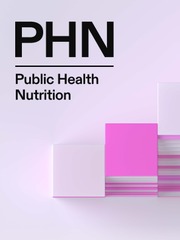No CrossRef data available.
Article contents
Coexisting forms of malnutrition among under-5 children in Bangladesh: results from 2012-13 and 2019 Multiple Indicator Cluster Surveys
Published online by Cambridge University Press: 07 April 2025
Abstract
Underweight, wasting, and stunting are crucial malnutrition indicators responsible for morbidities among children. Data regarding coexisting forms of malnutrition (CFM) is scarce. We aimed to investigate the prevalence and associated factors of CFM across two survey years among under-5 Bangladeshi children.
Cross-sectional study.
Data were acquired from two rounds of Multiple Indicator Cluster Survey (MICS), Bangladesh conducted in 2012-13 and 2019.
The analysis included 43,946 (2012-13: 20,885; 2019: 23,061) under-5 children.
Binomial proportion test, slope index of inequality, and multinomial logistic regression models were used for analysis. The prevalence of CFM was 27.45% and 18.56% in 2012-13 and 2019, respectively. A significant decrease in the prevalence of CFM was seen across the surveys (p-value<0.001). Children from urban residence [(2012-13:aOR=0.70, 95% CI:0.64,0.77); (2019:aOR=0.71, 95% CI:0.65,0.78], higher maternal education [(2012-13:aOR=0.28, 95% CI:0.24,0.32); (2019:aOR=0.28, 95% CI:0.24,0.32], larger size at birth [(2012-13:aOR=0.62, 95% CI:0.52,0.73); (2019:aOR: 0.60, 95% CI:0.50,0.73], richest wealth quintile [(2012-13:aOR=0.25, 95% CI:0.22,0.28); (2019:aOR: 0.30, 95% CI:0.27,0.34)] had lower odds of suffering from CFM compared to their counterparts. Children from poorer quintiles were more influenced by CFM than richer quintiles (Coef.:-0.175, 95% CI:-0.192,-0.157, p-value<0.001). Higher percentage of CFM was observed among rich families in 2019 compared to 2012-13 (24.50% and 20.15%, respectively; p-value<0.001)
The findings of this study should help the researchers and policymakers to understand CFM more clearly and plan prospective studies to explore CFM outcomes. Targeted interventional approaches are needed among parents of rural communities to control the burden of CFM.
- Type
- Research Paper
- Information
- Creative Commons
- This is an Open Access article, distributed under the terms of the Creative Commons Attribution licence (http://creativecommons.org/licenses/by/4.0/), which permits unrestricted re-use, distribution and reproduction, provided the original article is properly cited.
- Copyright
- © The Author(s), 2025. Published by Cambridge University Press on behalf of The Nutrition Society


